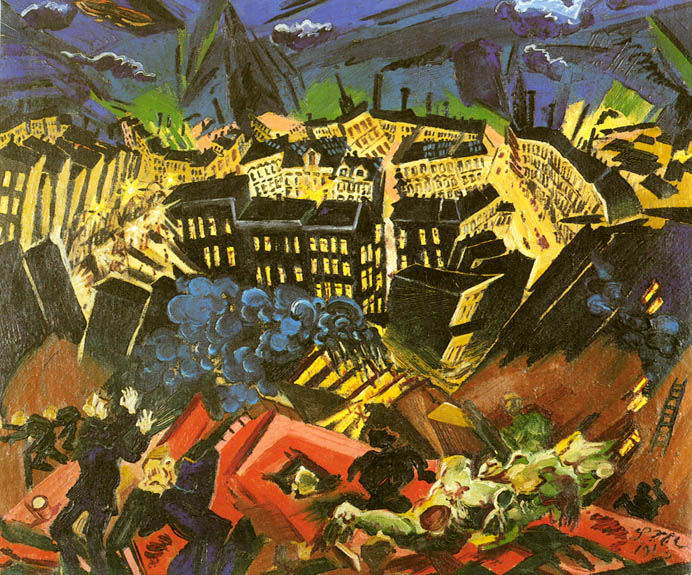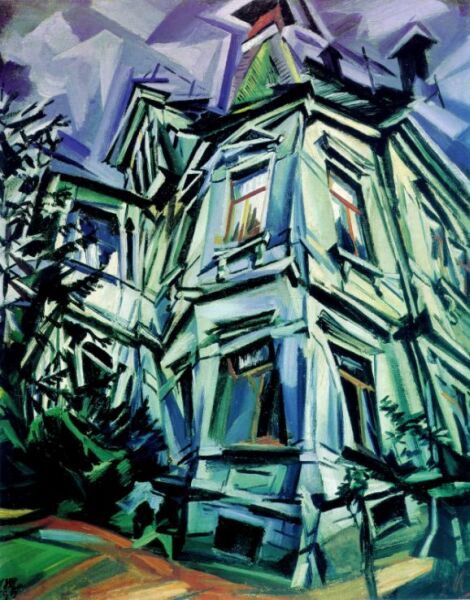Ludwig Meidner (1884-1966)
Get a Meidner Certificate of Authenticity for your painting (COA) for your Meidner drawing.
For all your Meidner artworks you need a Certificate of Authenticity (COA) in order to sell, to insure or to donate for a tax deduction.
Getting a Meidner Certificate of Authenticity (COA) is easy. Just send us photos and dimensions and tell us what you know about the origin or history of your Meidner painting or drawing.
If you want to sell your Meidner painting or drawing use our selling services. We offer Meidner selling help, selling advice, private treaty sales and full brokerage.
We have been authenticating Meidner and issuing certificates of authenticity since 2002. We are recognized Meidner experts and Meidner certified appraisers. We issue COAs and appraisals for all Meidner artworks.
Our Meidner paintings and drawings authentications are accepted and respected worldwide.
Each COA is backed by in-depth research and analysis authentication reports.
The Meidner certificates of authenticity we issue are based on solid, reliable and fully referenced art investigations, authentication research, analytical work and forensic studies.
We are available to examine your Meidner painting or drawing anywhere in the world.
You will generally receive your certificates of authenticity and authentication report within two weeks. Some complicated cases with difficult to research Meidner paintings or drawings take longer.
Our clients include Meidner collectors, investors, tax authorities, insurance adjusters, appraisers, valuers, auctioneers, Federal agencies and many law firms.
We perform Ludwig Meidner art authentication, appraisal, certificates of authenticity (COA), analysis, research, scientific tests, full art authentications. We will help you sell your Ludwig Meidner or we will sell it for you.

Ludwig Meidner was a German expressionist painter. Meidner was born on 18th April 1884 in Bernstadt, Silesia. He studied at the Royal School of Art in Breslau and, from 1906-07 at the Julien and Cormon Academies in Paris where he met and became friends with Amedeo Modigliani. He returned to Berlin to work as a fashion illustrator and produced realistic if uninspired views of Berlin.
In 1912 he began a series of paintings which marked a radical departure in style and would make his reputation. The “Apocalyptic Landscapes” anticipate the horrors of the First World War by several years. The series, produced rapidly in a hectic heatwave, are some of the purest “expressionist” works, portraying the terror of the modern city in catastrophic setings; comets cross the sky like canon shells, fires rage, men scream and flee for their lives, buildings totter on the edge of collapse. Meidner would however never repeat the intensity and creativity of the apocalyptic landscapes.

After the First World War his art turns to producing religious paintings including a long and repetitive series of portraits of “prophets”. He is a habitual self-portraitist producing a remarkable series of Rembrandt inspired self-portraits that provide a vivid illustration to his passing years. His portraits from 1915 to the end of the 1920s are a gallery of the leading expressionist and Dada writers and poets. Meidner himself increasingly turned to writing – he produced several books of dense expressionist prose and contributed to many newspaper articles.
In 1939 he fled with his family to England (his wife Else Meidner was also an artist) where he was interned as an enemy alien on Isle of Man. He stayed in England, unrecognised, working in odd jobs until 1952 when he returned to Germany. In 1963 he had his first major exhibition since 1918 in Recklinghausen and Berlin. He died on 14th May in Darmstadt, aged 82.

Still wondering about a German painting in your family collection? Contact us…it could be by Ludwig Meidner.
Reviews
1,217 global ratings
5 Star
4 Star
3 Star
2 Star
1 Star
Your evaluation is very important to us. Thank you.
